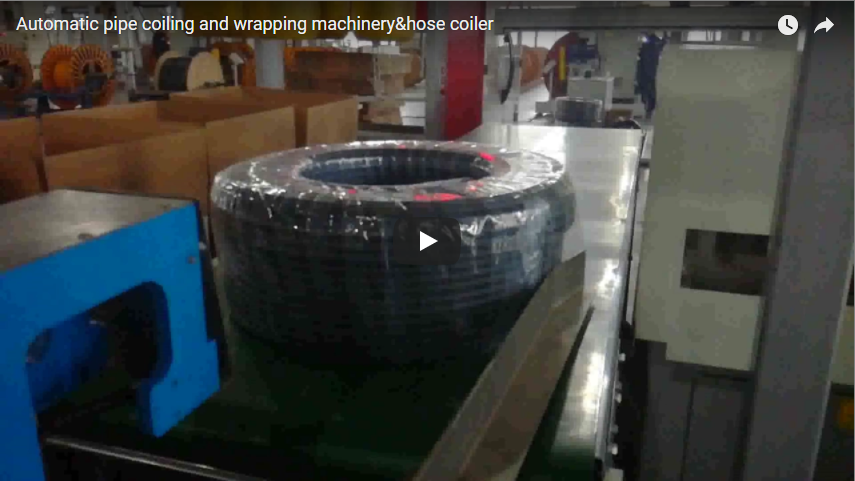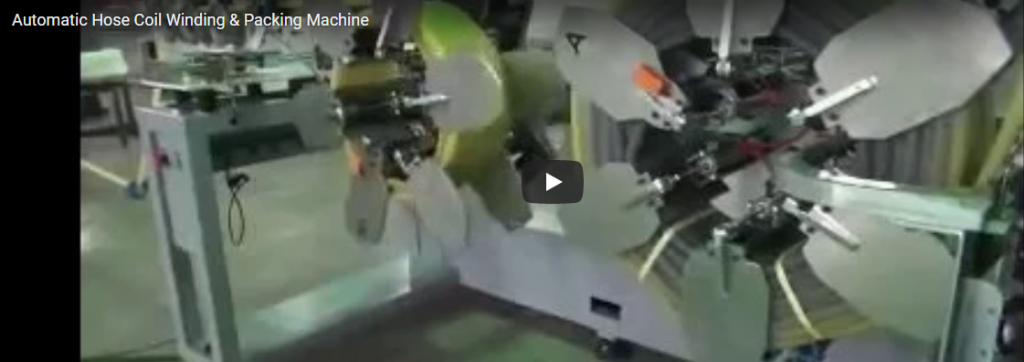Revolutionizing Pipe Handling: A Deep Dive into the Automatic Tube Coiler & Strapping Machine
In today's fast-paced manufacturing and distribution environments, efficiency, consistency, and safety are paramount. Manual handling of pipes and tubes for coiling and strapping often presents challenges – it's labor-intensive, prone to inconsistencies, and can pose safety risks. This is where automation steps in, and the Automatic Tube Coiler and Pipe Coiling Strapping Machine represents a significant leap forward.
From my perspective working with industrial automation, the impact of such machinery is transformative. It addresses critical bottlenecks in production lines dealing with flexible and semi-rigid pipes (like PEX, PVC, HDPE, corrugated conduit), streamlining the process from extrusion or unwinding right through to a pallet-ready product.
Let's take a closer look at this technology in action:
This video showcases the seamless operation, but let's break down the technical aspects and tangible benefits this machine brings to the table.
1. Understanding the Technology: How It Works Step-by-Step
The elegance of this machine lies in its integrated, automated sequence. Here’s a typical operational flow:
1.1. Pipe Accumulation & Guiding
The process often starts with an accumulator or dancer system that synchronizes the coiler's speed with the upstream process (like an extruder), preventing tension or slack. Guide rollers ensure the pipe feeds smoothly and correctly into the coiling head.
1.2. Precision Coiling Mechanism
The heart of the machine. A servo-driven or variable speed motor rotates a coiling head (often with adjustable arms or a collapsible mandrel) to form the pipe into a neat coil. Sensors monitor the incoming pipe length, ensuring precise coil dimensions based on pre-set parameters entered via the HMI (Human Machine Interface).
1.3. Automated Cutting
Once the desired length is reached, an integrated cutter (pneumatic, hydraulic, or servo-driven, depending on pipe type and wall thickness) cleanly severs the pipe. This is synchronized to happen typically when the coiling head momentarily stops.
1.4. Automatic Strapping Unit
The completed coil is then presented to the strapping station. One or more strapping heads automatically apply, tension, seal (usually via heat or friction weld), and cut straps (typically PP or PET) around the coil at predetermined positions. This secures the coil effectively for handling and transport.
1.5. Coil Ejection & Transfer
Finally, the strapped coil is automatically ejected from the coiling head. This could be onto a conveyor belt, a tilting mechanism for palletizing, or integrated with robotic handling systems for fully automated downstream packaging.
2. Key Technical Specifications & Features
While specifications vary between manufacturers and models, here are common parameters and features you'll encounter:
- Pipe/Tube Material Compatibility: Handles a wide range, including PEX-a, PEX-b, PE-RT, HDPE, LDPE, PVC, corrugated pipes, multi-layer composite pipes, etc.
- Pipe Diameter Range: Typically from ø12mm up to ø63mm or even ø110mm for larger models.
- Coiling Speed: Often variable, reaching speeds up to 60-150 meters per minute, synchronized with extrusion line speed.
- Coil Dimensions:
- Adjustable Inner Diameter (ID)
- Adjustable Outer Diameter (OD)
- Adjustable Coil Width/Height
- Control System: PLC (Programmable Logic Controller) based with a user-friendly Touchscreen HMI for setting parameters (length, coil dimensions, strap positions), recipe storage, diagnostics, and operation monitoring.
- Strapping System:
- Number of Straps: Typically 2, 3, or 4 straps per coil.
- Strap Material: Polypropylene (PP) or Polyester (PET).
- Sealing Method: Heat seal or friction weld.
- Drive System: Often utilizes servo motors for precise length measurement, coiling, traversing, and cutting actions.
- Optional Integrations: Can include in-line printing/labeling, automatic coil wrapping (stretch film), palletizing systems, and data logging for quality control.

3. The Advantages of Automation: A Shift in Perspective
Moving from manual or semi-automatic methods to a fully automatic coiling and strapping machine isn't just an equipment upgrade; it's a strategic business decision. Here's why I believe it's crucial for modern pipe producers:
3.1. Unmatched Efficiency and Throughput
Continuous, synchronized operation significantly boosts output compared to manual methods. Reduced cycle times mean more product packaged per shift.
3.2. Consistent Quality and Presentation
Automation eliminates human variability. Every coil has the same dimensions, tension, and strap placement, leading to a professional, uniform product appearance and easier handling downstream.
3.3. Drastic Reduction in Labor Costs
Manual coiling and strapping is physically demanding and requires significant manpower. Automation frees up operators for higher-value tasks and reduces direct labor expenses associated with packaging.
3.4. Enhanced Workplace Safety
Automating the process removes operators from repetitive motions and potential hazards associated with handling long lengths of pipe and operating strapping tools manually.
3.5. Optimized Material Usage
Precise length cutting minimizes pipe scrap. Consistent strap tensioning uses strapping material efficiently without over-tightening or leaving coils loose.
4. Applications Spanning Diverse Industries
The versatility of the automatic tube coiler and pipe coiling strapping machine makes it indispensable across various sectors:
- Building & Construction: Coiling PEX pipes for plumbing and underfloor heating, electrical conduit, and drainage tubes.
- Telecommunications: Handling fiber optic microducts and communication conduits.
- Agriculture: Coiling irrigation tubing (drip lines, distribution pipes).
- Automotive: Producing coils of fuel lines, brake lines, or wire harness conduit.
- General Industry: Any application involving long lengths of flexible or semi-rigid plastic tubing requiring coiling for storage or transport.
5. Implementation Considerations
Integrating such a system requires careful planning:
- Line Integration: Ensuring seamless communication and synchronization with upstream (extruder/haul-off) and downstream (conveyors, palletizers) equipment.
- Space and Layout: Allocating sufficient floor space for the machine and associated handling areas.
- Operator Training: Equipping staff to operate the HMI, perform changeovers, and conduct basic troubleshooting.
- Maintenance: Adhering to recommended preventative maintenance schedules for optimal performance and longevity.
Conclusion: Embracing Automated Excellence
The Automatic Tube Coiler and Pipe Coiling Strapping Machine is more than just machinery; it's a solution provider. It directly addresses the industry's need for higher efficiency, consistent quality, improved safety, and reduced operational costs in pipe and tube handling. As industries continue to evolve towards smarter manufacturing, adopting such automated systems becomes less of a luxury and more of a necessity for staying competitive.
What are your experiences with automating end-of-line packaging processes for pipes and tubes? Share your thoughts or questions in the comments below!






